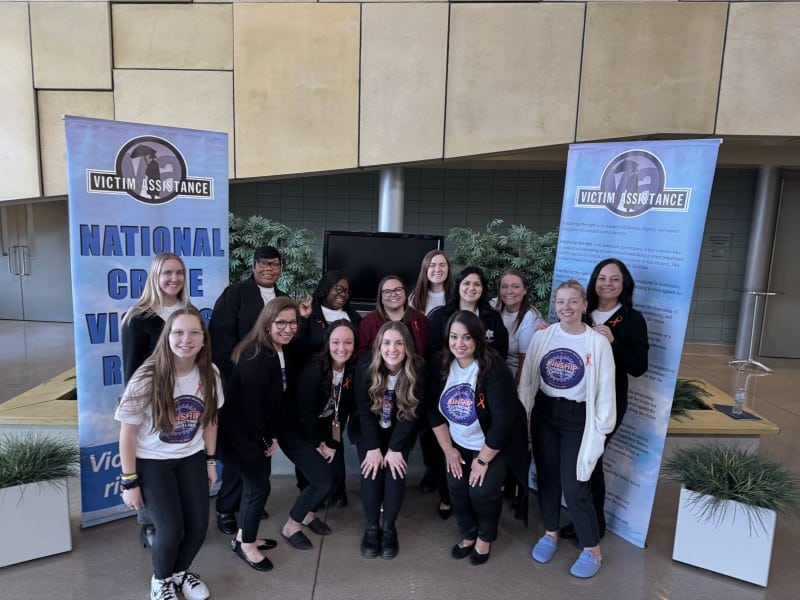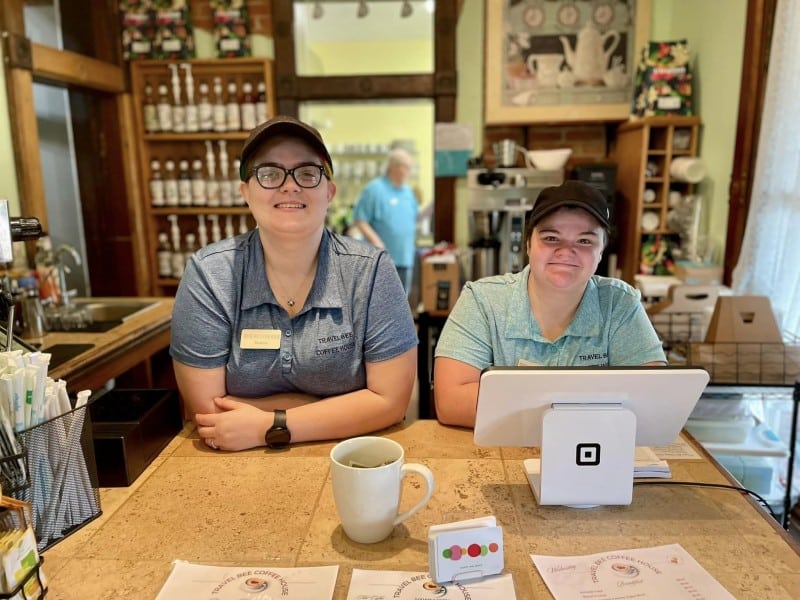Voices of South East: English Language Learner teachers fill gaps in student and family support
When the pandemic forced Fort Wayne schools to move to virtual learning models, students, families, and teachers alike had to get creative and collaborate to support young English Language Learners.
After spending much of the 2020-2021 school year learning in virtual environments due to the COVID-19 pandemic, students are once again filling classrooms this fall.
Juli Dominguez, a teacher at Kekionga Middle School, says she can feel a renewed sense of excitement and relief among her students.
“They are so happy to be back and to be able to interact with their friends and teachers again,” she says.
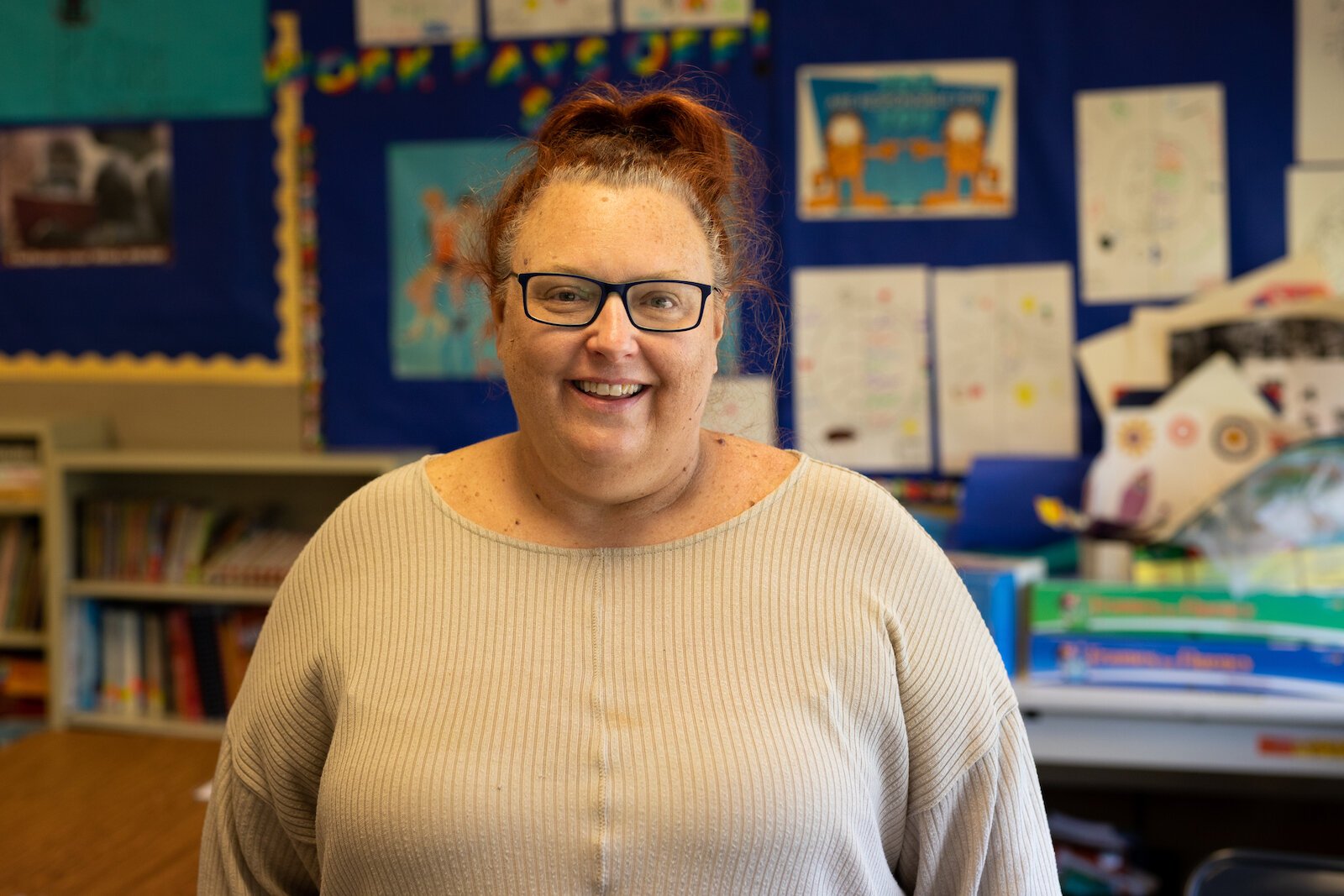
Dominguez is an English Language Learner (ELL) teacher for Fort Wayne Community Schools. While there are certainly social and emotional benefits of in-person classes for students of many backgrounds, for students attempting to learn English, in-person schooling is by far the most effective option.
When the pandemic forced Fort Wayne schools to move to virtual learning models in 2020, students, families, and teachers alike had to get creative and collaborate to help young learners keep progressing. Many ELL teachers went above and beyond to attempt to meet their students where they were at—both literally and metaphorically.
English Language Learners in Fort Wayne
According to the U.S. Census Bureau, 12.64 percent of nearly 270,000 residents in Fort Wayne speak a language other than English. The most widely spoken of these other languages is Spanish (6.29 percent of the population).
While you might think of non-English speakers as ESL, or English as a Second Language, the term ELL or English Language Learner (ELL) is more accurate, due to the fact many consider English their third, fourth, or even fifth language.
Across Fort Wayne Community Schools district, more than 2,800 students participate in ELL programs, with more than 70 languages spoken by interpreters, students, and their families. Non-English speakers make up 11.5 percent of the school district’s total enrollment.
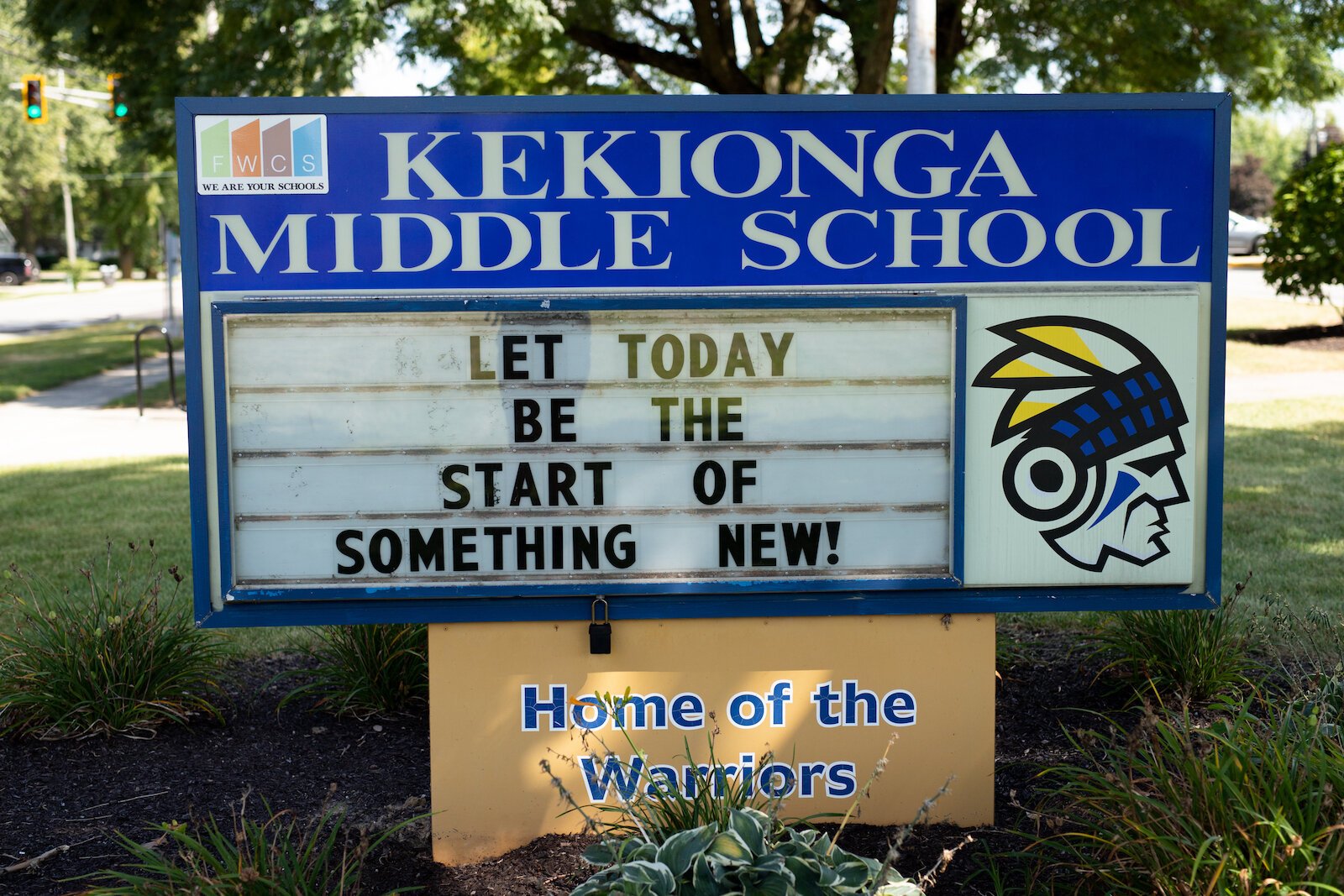
In 2018, Fort Wayne Community Schools was honored as the first ever recipient of the Title III Distinguished Indiana School District Award by the Indiana Department of Education (IDOE) for its efforts to work with students for whom English is new or a second language.
But pandemic-related restrictions presented new challenges for these populations. Issues such as access to resources, including the proper tech to access their classrooms and teachers, added stress to the already challenging task of acclimating to a new culture and learning a new language.
When Dominguez’s school went to an asynchronous, hybrid virtual learning model during the pandemic to reduce the number of people in the classroom at the same time, she had some early reservations about it.
“I knew this wasn’t going to work for my students,” she says. “So I taught them on Zoom at home, while I taught my students in person at the same time.”

When students moved to a fully online learning model, the challenges continued. One student Dominguez works with had recently emigrated to Fort Wayne from Malaysia and primarily spoke Malay. They didn’t know how to use Zoom, so Dominguez made a home visit to teach this student how to use the platform and how to complete their virtual learning assignments.
While this tutorial helped, other challenges arose. Students who did not primarily speak English or Spanish were unable to translate their classroom materials from their computers into their primary languages, making the coursework inaccessible.
Dominguez, who has been a teacher for 25 years, says these challenges caused learning setbacks in her classroom. At the same time, she sees the complexity of the situation. She has appreciated the leadership of her school district during the crisis and their decision to put a mask mandate in place, as well as continued efforts to keep students and teachers as safe as possible.
The question remains: How can we keep finding ways to better serve ELL students?
Working with parents
Part of effectively supporting ELL students involves collaborating with their parents and caregivers.
Throughout the pandemic, connecting with families was more challenging than usual, says Heather Luessenhop, a teacher of 22 years, who currently teaches Kindergarten and First Grade at Northcrest Elementary School.
“The biggest transition we faced was contacting families and making sure they knew how to connect to the learning platform,” Luessenhop says. “The district tried to do some quick work and push out some information in two of our major languages (Burmese and Spanish), but parents just did not know where to go to access this information. We tried our best to use interpreters and phone apps. But even then, families would not have their student’s login information to do their schoolwork.”
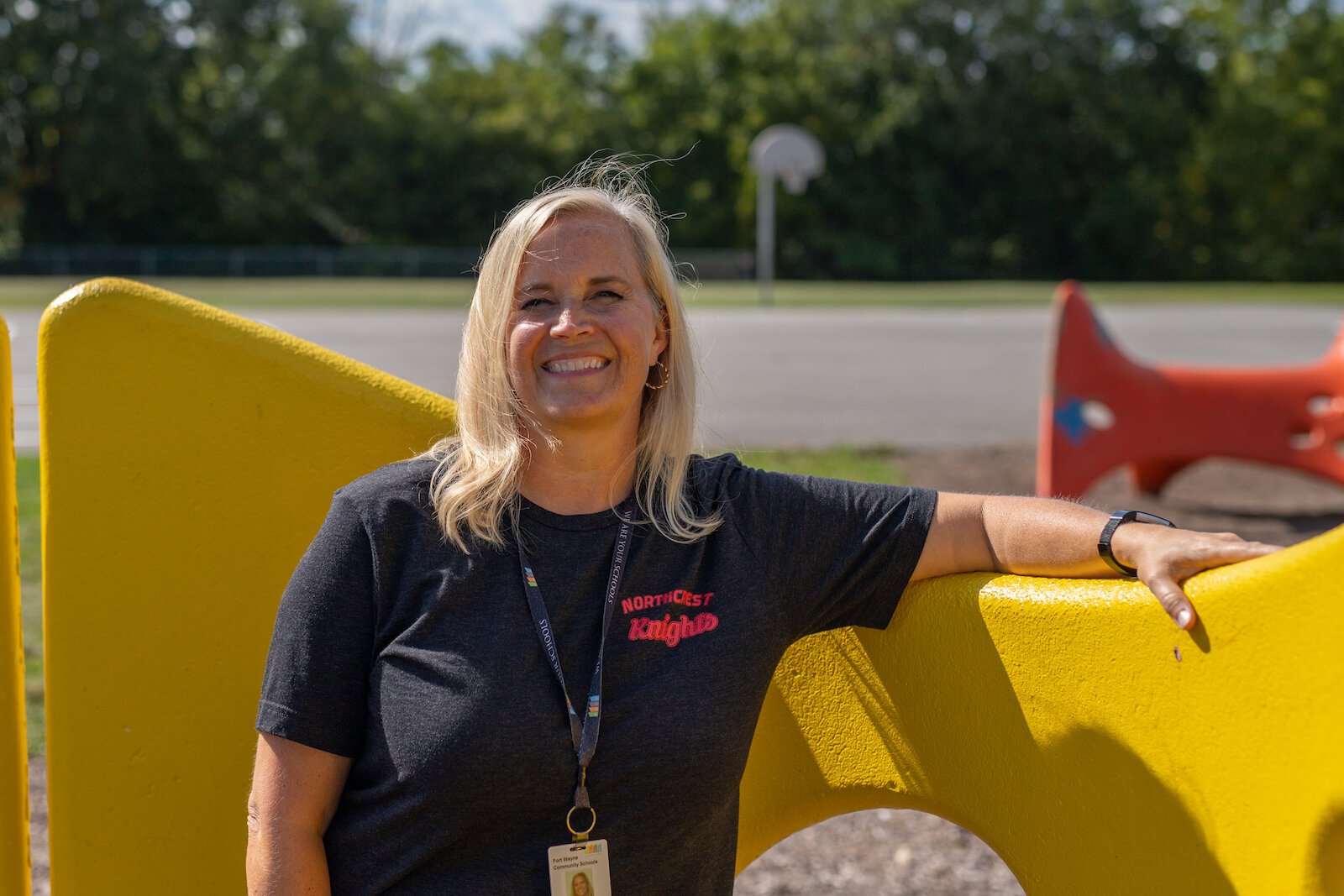
Non-English-speaking parents had challenges in understanding the logistics of their children doing school online. Along with ensuring students had proper access to their courses and classwork, making sure students had access to other necessities during the crisis was also important to Luessenhop.
“We had a new refugee family I remember checking on at the time of shut down, just to make sure they had enough food and resources,” Luessenhop says. “The interpreter had let me know that the father had been laid off, and I wondered if he would receive the stimulus check to make it through. But it turned out well in the end, and they did OK. Another family had just come from Egypt, and when I called the father, he said the kids were sleeping until around 3 p.m. in the afternoon. I think the family was just trying to cope.”
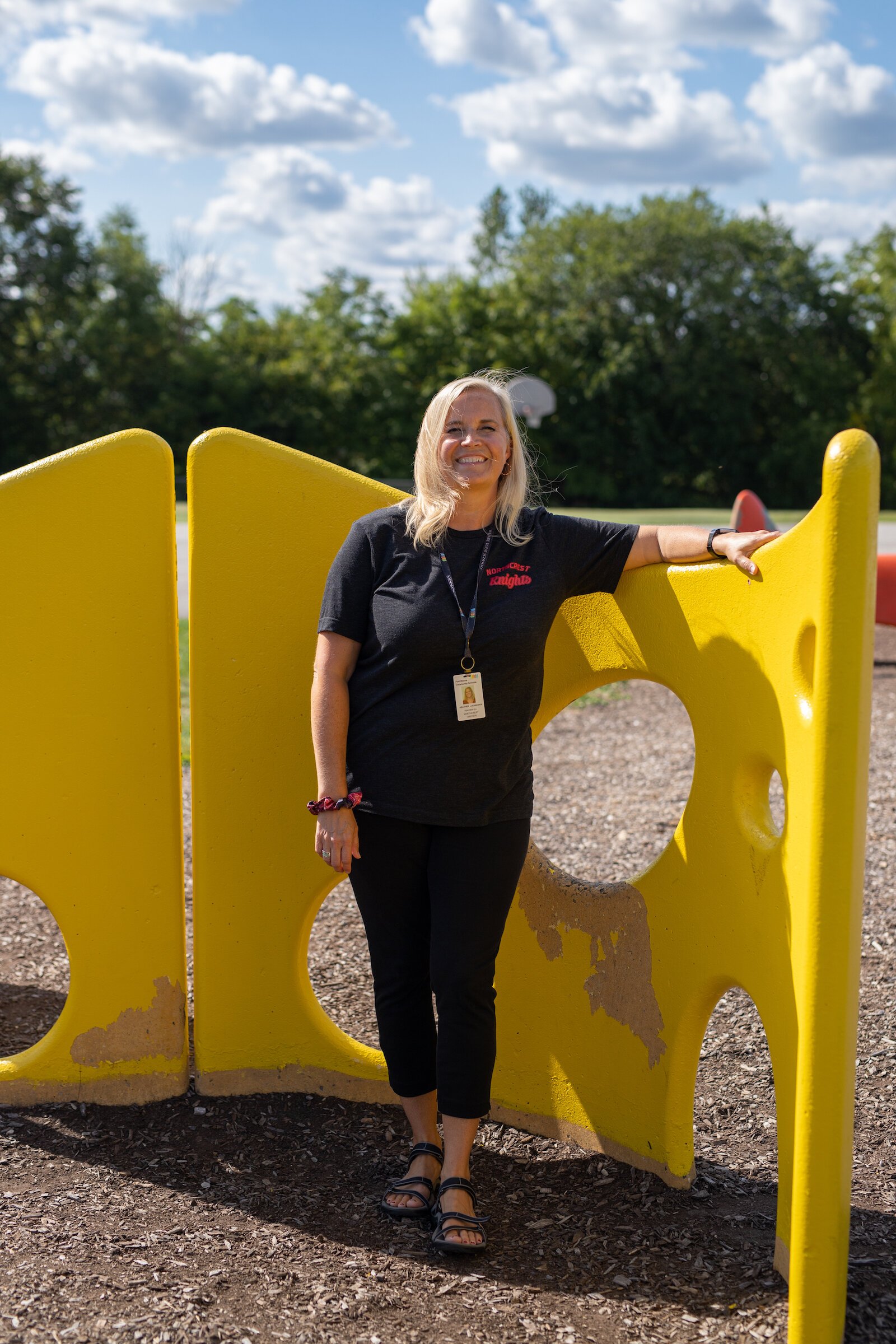
Luessenhop says these siblings are doing well now that they have returned to school. While there are still challenges for students and teachers alike, she feels good being in-person with her students again and says students are happy to make the return.
“I feel safe being back at school,” she says. “Students and staff wear their masks. I think everyone is more aware now of their spacing, and we remind the smaller students, especially, to stay out of each other’s faces. We wash hands and use lots of sanitizers. Overall, I think students are excited to be back in-person, especially the ones who were virtual last year. In-person socialization is a huge piece of what gives school enjoyment and meaning.”
Building relationships
After graduating from Purdue University Fort Wayne in May 2020, Anna Galdamez spent much of the year working as an assistant teacher at Northrop High School with incoming freshmen and sophomores.
This year, she works at Abbot Elementary as an ELL teacher, working with students who have recently arrived to the state or country.
“Abbot has 86 percent of students who are Spanish-speaking, the remaining population is a lot of Burmese students,” Galdamez says.
During the previous school year, one of her biggest hurdles in working with ELL students was creating a welcoming environment where students were able to learn and feel comfortable.
“Arriving to a new country and not speaking the language is already overwhelming enough,” she says. “To do that in the middle of a pandemic and to try to communicate with people was the hardest thing for many students.”
Creating relationships with new students and breaking down walls they may have up in adapting to a new environment and culture is essential in the ELL programs. While technological problems were prevalent, Galdamez says one of her biggest challenges was ensuring students were practicing their English Language learning skills while studying from home to maintain or improve their WIDA scores.
WIDA or World-Class Instructional Design, is a consortium of states dedicated to advancing academic language development and academic achievement for non-English speakers. English language proficiency is measured based on performance and growth on the WIDA assessment that is taken in the spring semester of every school year.
Students who are identified as English Learners are included when this measurement is reported. Records from the Indiana Department of Education indicate that 31.6 percent of ELL students meet or exceed their annual growth target. This is the measurement that shows whether students are on target to develop and attain English Language proficiency within six years.
While third through fifth graders fall between 33-38 percent, students in secondary education measure between 16-19.4 percent for this same target.
“Looking at the WIDA scores, at least from my school last year, there were a lot of students who didn’t improve and some who regressed,” Galdamez says.
She adds that students were vocal with her mentor (the teacher she worked under) that it was difficult to feel motivated, and their drive was affected by being out of the classroom environment. Students who are normally introverted were affected the most heavily, she notes, as they were able to stay within their “bubble” due to the lack of in-person learning and forced interaction.
Even with these setbacks, Galdamez feels students are bouncing back and resilient as they re-enter their classrooms this fall.
“We’ve learned tricks within the new regulations to still mimic what we did before,” she says. “Though last year was rough, and both students and teachers alike felt that this year seems to be headed in the right direction.”
Steps to improvement
While collectively there are feelings of joy with a tentative return to normalcy, many ELL educators outline steps that can be taken to ensure ELL students don’t regress in future years. The continued use of safety measures in schools is also an important element of planning, as both educators and students alike find themselves adapting to the ever-changing COVID-19 environment.
Galdamez believes “connection” is key to serving ELL students to the utmost extent in the future.
“We need students to know that we are still there for them—whether that’s doing a home visit or a phone call to parents just to check-in,” she says. “Taking the extra step to maintain that relationship while simultaneously helping them learn the material will make all the difference in terms of their regression.”
Dominguez says taking steps to reduce the spread of the virus among students and teachers, including wearing masks, getting vaccinated, and sanitizing desks and hands, is another key to ensuring that students get to stay in school.
“We need our teachers and students in school where the ELL students learn best,” she says. “If students or teachers must stay home to quarantine or isolate, it’s a best practice for ELL students to see their teacher’s face via Zoom or a pre-recorded video. While in school, ELL students should be taught how to operate their laptop, find their course work, send their teacher’s emails, to turn in assignments, and (use) Zoom.”
Ideally, Dominguez says parents can help by making sure students have a quiet place to study at home and ensuring that every ELL student has access to a bilingual dictionary.
To encourage these steps, Luessenhop says communicating the value of a quality education to parents and encouraging their active participation is among the most important factors to ensuring students’ continued progress in school.
She says it is important in a virtual learning environment for students to have a daily routine.
“Even when students are not at school, they can continue their learning by reading every day,” she says. “Parents can ask them questions about what they are reading to improve comprehension, even if it is in their home language.”
This story is a part of Input Fort Wayne’s Voices of South East series, running from August-September 2021 and funded by the Foellinger Foundation. For more information, read the first story in the series.



